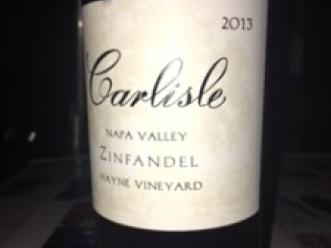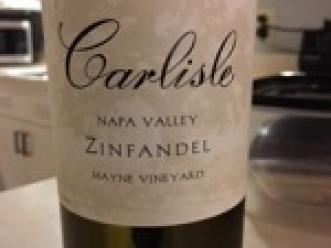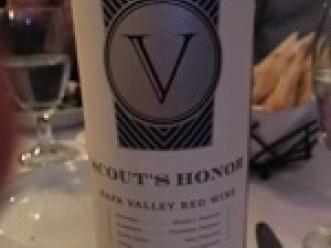Welcome to Red on RedsI This feisty Italian redhead is dishing about all things red wine. Now please don’t misunderstand: I’m not a white hater - I mean, who wouldn’t love a crisp Sauvignon Blanc with a bowl of mussels? But we’ll stick to the world’s glorious canvas of reds. Think of this as an adventure: I’m your old college buddy who’s just talked you into a spontaneous road trip! Come enjoy the ride from a fellow wine lover (not expert) point of view and we’ll even unearth some lesser known varietals to branch out together. Let’s share stories, seek out new varietals, and soak up as much as we can along the way.
Let’s talk about Zin, baby. Zinfandels, that is. Just because I love them. A bit of trivia for you, courtesy of Wikipedia: Did you know that the Italian varietal Primitivo is genetically identical to Zinfandel and can be marketing as either a Zin or Primitivo in the U.S.? But apparently a U.S.-made Zinfandel by any other name does not smell as sweet: we are forbidden from marketing it as Primitivo in Europe.
If you are a newbie, it is important to note that most zins are red. The same red grape is also responsible for White Zinfandels (I believe the secret is in how long the skins are pressed) but if you simply order a “Zin” you will get a crimson delight. Fermentation techniques for this lovely grape have evolved over the years and encompass a production range from sweet (White Zinfandel, ports) to light-bodied to fuller, bolder, complex blends – the most delish, in my book.
Zinfandels grow really well in the Dry Creek Valley, just north of Napa Valley. And here in Healdsburg you will find one of my favorite wineries, Dry Creek Vineyard. I first visited years ago and fell head over heels in love with their signature Old Vines Zinfandel. This blend of Zinfandel and Petite Syrah is bold and balanced but not overpowering and fills your mouth with wonderful berry flavors. “Old Vines” is commonly understood to mean, well, literally, really old vines. As vines age, they produce less fruit but the lean harvest produces more intense, concentrated juices. Seems wine gets better with age even while still on the vine! Experts debate on how old is “old” but it’s usually thirty or forty years old for more established regions, and maybe twenty for newer ones. This Zin has a peppery kick but a balanced complexity that holds together and co-stars nicely with roasted pork chops, strong cheeses, or hearty red pasta sauce. Critics really dig it, too.
And here I pause for clarification: While I have a baseline understanding of critical review and the wine point system, I’m not a trained sommelier or viticultural expert. I’ll just share my impressions and hope you experiment and do the same. See, wine appreciation is not rocket science; it’s more about laughter, conversation and hospitality then it is about snooty attitudes or intimate knowledge of fermentation techniques. To love wine is to love people.
Anyway, back to our dinner guest. This particular Zin holds a special place in my heart as I loved it so much, my husband and I selected this as the official red wine for our wedding last year. Heading up to Healdsburg on a chilly spring afternoon, chatting away with friendly Dry Creek employees as we happily crammed the cases in our SUV and enjoying the anticipation of serving this wonderful wine to treasured family and friends are all fond memories I sip with every glass of this jeweled red.
If there’s a wine you have a hankering to learn about or anything else that strikes your fancy, please drop me an email at [email protected]. If you’re ready to join me on this journey through the world of reds, then pack your bags, call in sick to work, gas up the tank and let the adventure begin!
Maria Ross is a freelance writer who also runs Red Slice, a branding and marketing agency that helps emerging businesses, including wineries and wine bars, tell their unique story and attract new loyalists. She is based in Seattle.




